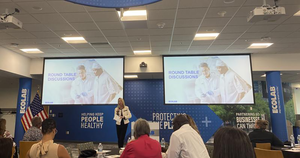Sponsored By
Food Safety
Colorful produce selection at a grocery store
Fresh Produce
A recipe for greater produce safetyA recipe for greater produce safety
Automation and training are key for protecting products
Stay up-to-date on the latest food retail news and trends
Subscribe to free eNewsletters from Supermarket News











.png?width=300&auto=webp&quality=80&disable=upscale)




























.webp?width=300&auto=webp&quality=80&disable=upscale)
